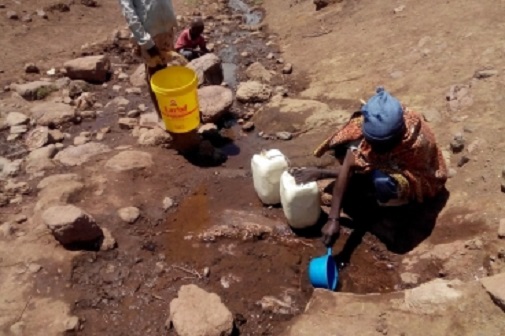
COMMENT: Surface water resources, such as desalinated seawater or recycled wastewater, will not close the global gap between supply and demand
By Yasmin Siddiqi
We live on a parched planet. Farmers till arid pastureland, and policymakers fret over empty reservoirs, dry rivers, and thirsty cities. And that only scratches the surface – literally – of the world’s water problem. Subterranean aquifers, which amount to the world’s reserve water tank, are also running dry. If this continues, the consequences could be dire, especially for water-stressed and fast-growing Asia.
Subterranean aquifers are repositories of water located deep underground, in permeable rock, soil, or sand. And they contain about 100 times the amount of water found on the earth’s surface, in streams, lakes, rivers, and wetlands. If you’re in central Africa, South America, or some parts of Europe, you’re probably standing just a few hundred feet above one.
Surface water resources, such as desalinated seawater or recycled wastewater, will not close the global gap – predicted to reach 40% by 2030 – between water supply and demand. So subterranean aquifers are increasingly being exploited for agriculture, power generation, and daily use in fast-growing cities (urban Asia is growing at a rate of 120,000 people per day).
Today, about 30% of the world’s liquid freshwater comes from subterranean aquifers. And one-third of the 37 largest aquifers studied by the University of California between 2003 and 2013 were severely depleted, receiving little or no replenishment from rainfall. Some of the most stressed aquifers are in the driest regions, including Asia, up to 88% of which is water-stressed.
Asia contains around one-third of the world’s land irrigated by groundwater, with India, China, and Pakistan being the biggest consumers. South Asia alone accounts for half the groundwater used globally. But Asia’s aquifers – many of which were formed millennia ago, when areas like northern China had a more humid climate – are no longer being replenished regularly by rainfall.
Instead, boreholes are getting deeper and water tables are falling. In Pakistan’s Punjab Province, over-pumping is lowering the water table by up to a half-meter (20 inches) per year, threatening future food and water security and making thirsty crops like sugarcane and rice tougher to grow.
Asia’s surging population – which could jump by 25%, topping five billion, by 2050 – will put even more stress on food, energy, and water supplies. Globally, 60% more food will be needed by then, with agriculture soaking up increasingly scarce freshwater. Climate change will exacerbate conditions further.
But the problem extends beyond water depletion. Over-pumping of groundwater is already leading to soil subsidence, causing some Asian cities to sink. By 2030, as much as 80% of North Jakarta could be below sea level. Parts of Beijing are sinking by several centimeters per year, according to some estimates.
Moreover, depleted aquifers near coastlines are prone to contamination from saltwater, rendering land barren. Some aquifers are contaminated by arsenic, which can occur naturally deep underground. Nature Geoscience estimates that more than 60% of groundwater in the Indo-Gangetic aquifer is contaminated by arsenic or salt. In Bangladesh, water tainted by arsenic is blamed for more than 40,000 deaths each year.
The first step toward remedying this situation is to establish precisely how much groundwater is left and how it is being used – not easy, but not impossible either. NASA’s Gravity Recovery and Climate Experiment satellite provides information on changes in the earth’s gravity due to fluctuating water volumes. And by applying remote sensing technology to river basins, we can determine how much surface water is available and who is consuming what.
Another important step is to improve the pricing of groundwater. China has run a pilot program in which farmers had to pay extra if they pumped more than their allocation. Similar approaches have worked well in Australia and Mexico. But such measures can be politically difficult to implement. The key to success will be to help countries not only to design the right policies, but also to create the legal frameworks needed to establish and enforce them.
Even more politically difficult would be the elimination of electricity and gas subsidies, which encourage farmers to pump groundwater all day. If such subsidies can’t be withdrawn, there are innovative alternatives that could curb over-pumping.
For example, in Gujarat, India, the government has reduced groundwater pumping by offering power for just eight hours per day. Farmers have the power they need, but can’t pump all day long. Another approach could be to buy back surplus power from farmers to feed into the grid. That would not just reduce over-pumping, but also help to supplement rural incomes.
Efforts to replenish aquifers could also be pursued. A pilot program in India’s Uttar Pradesh state collects excess floodwater in storage ponds, from which water seeps into the water table.
The final step would be to improve management of surface water, thereby reducing the temptation to turn to groundwater in the first place. Around 80% of wastewater is returned untreated to rivers, often contaminating them. Taking stronger action to stop this would be far simpler – including logistically and politically – than conserving groundwater.
Subterranean aquifers should be the reservoir of last resort. If we don’t protect them today, future generations will pay a steep – or even an existential – price.
****
Yasmin Siddiqi is Principal Water Resources Specialist at the Asian Development Bank.
Copyright: Project Syndicate, 2017.
www.project-syndicate.org
 The Independent Uganda: You get the Truth we Pay the Price
The Independent Uganda: You get the Truth we Pay the Price



